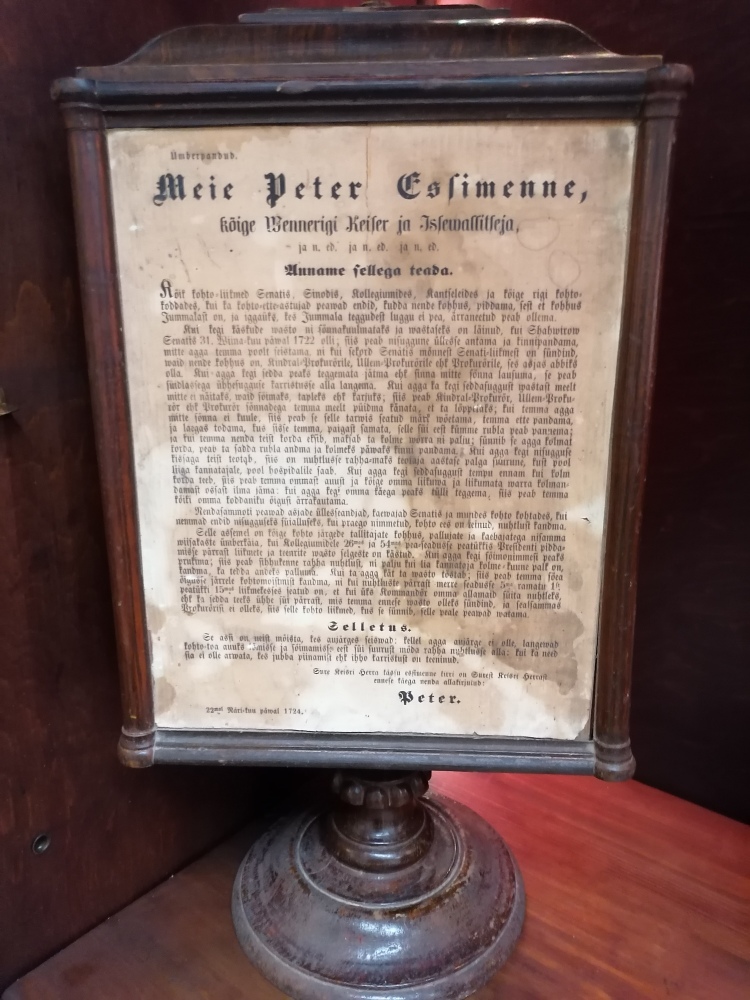Collections
The collection of the Estonian Pedagogical Archives and Museum (EPAM) is made up of collections of manuscripts, printed materials, photos and audiovisual materials, and items.
Manuscript collection
The manuscript collection contains the memoirs, research and correspondence of well-known education and school figures as well as educational and cultural history sources (school chronicles, minutes books and journals, school certificates, notebooks, etc.). The oldest original materials date back to the second half of the 19th century, such as the chronicles of Joa Parish School from 1875 to 1909, the journal of Hulja School from 1880 to 1902, correspondence from Vändra School for the Deaf and Dumb from 1864 to 1879, and school notebooks and certificates since the end of the 1870s. The collection includes a lot of materials that cover expatriate Estonian education and cultural history – materials from the School Committee of the Estonian Council, journals from camp and further training schools, including minutes of final examinations, results reports, certificates. The larger personal funds are made up of the materials of internationally renowned education scientists and school leaders Johannes Käis, Aleksander Elango, Herman Rajamaa and Heino Liimets. In the 21st century, the collection has grown most by the number of student research papers on the historical development of pre-school children’s establishments and certain aspects of basic education.

Collection of printed materials
The main emphasis of the collection of printed materials is on study literature, schools’ publications (school histories, students almanacs, journals, school newspapers) and pedagogical periodicals in the Estonian language and published in Estonia. Printed materials related to the creation and development of the expatriate Estonian school, Estonian-language school textbooks published in foreign countries, and memoir books form a separate collection. The oldest book is ‘Aritmetischer Wegweiser, oder nach Ehst- und Lieflandischer Handlung gründlich eingerichtetes: Erstes Revalsches Rechenbuch: in XII Theilen und einem nützlichen Anhang’ by Tallinn accountant Johann Daniel Intelmanns published in Halle in 1736. The ‘Koli-ramatu’ series (1852–1861) edited by Johann Georg Schwartz could be considered the pearl of the collection. The collection of printed materials provides an overview of the teaching methodology literature and study programmes (including pre-school children’s establishments) of national education through time as well as school organisation, etc. The collection is constantly supplemented with study materials about teaching the Estonian language as a foreign language.
Photo and audiovisual collection
The collection of photos and audiovisual materials contains photos of education and school life figures, school and kindergarten buildings, school and kindergarten rooms, outdoor areas and events. The earliest photos date from the 1860s and represent the teachers of Vändra School for the Deaf. In addition to paper photos, the collection includes study-purpose glass and film slides and educational films used in schools. The share of digital photos and videos has started to grow rapidly in recent years. The collection also contains various sound media – vinyl records, audio tapes, cassettes and CDs. The most valuable part of the audio materials is made up by interviews with the then educational figures.
Item collection
The item collection contains study and presentation tools (wall maps and tables, measurement instruments, models, moulds), school supplies (writing implements, tablets, everyday items), insignia (badges, medals, banners, emblems), art and handicraft works (drawings, handmade works crafted by students), textile items (school uniforms, school uniform elements) and school furniture.
